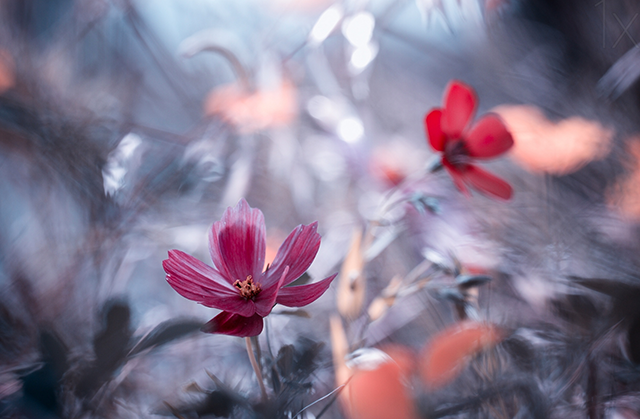
What reality are you experiencing right now? Maybe it’s the same as the person sitting next to you, but most likely it’s different, in ways that are often quite subtle.
The problem with how we perceive reality is that our bodies have no direct connection to the world around us. It’s as if our conscious Self is trapped inside a space suit — or an Earth suit — relying on our senses to spoon feed it information from the world.
That means our brains never directly touch the objects that our fingers pick up or hear the sound of our lover’s voice. And our senses, as efficient as they are, are hardly scientific instruments.
So instead of measuring the wavelength of light, our eyes pass “color” onto our brains. The other senses do a similar kind of translating, reducing “reality” to a form that our brains can handle, one filled with objects that we can chase after, run away from or eat.
At the same time, our brains do a fair amount of processing, of even the limited information coming in through our senses. This filtering, it turns out, is shaped not only by our physiology, but also by our culture and language.
Take color, for example. We often assume that, unless you are color blind, colors are the same for everyone. But scientists have discovered that not everyone sees colors in the same way. And some colors may not have even existed for humans until fairly recently.
As the Radiolab episode “Colors” describes, blue didn’t exist in ancient languages like Greek, Chinese, Japanese, or Hebrew. And without the word for this color, people from that time may not have seen the color at all.
This lack of “blue” is apparent in Homer’s Odyssey. The poet provides pages of description of armor, weaponry, animals and facial features. But no blue. In fact, the most commonly mentioned colors are black and white, with red, yellow and green falling far behind.
This is not unique to Homer. Other ancient texts — from Icelandic sagas, the Koran — never mention blue. The color is absent even in the Hindu Vedic hymns.
“These hymns, of more than ten thousand lines, are brimming with descriptions of the heavens,” wrote English scholar William Gladstone in 1858. “Scarcely any subject is evoked more frequently. The sun and reddening dawn’s play of color, day and night, cloud and lightning, the air and ether, all these are unfolded before us, again and again … but there is one thing no one would ever learn from these ancient songs … and that is that the sky is blue.”
Modern science supports the notion that language shapes how we see color. Experiments with the Himba tribe from Namibia showed that members of the tribe — which has no word for blue, or distinction between blue and green — could not pick out a blue square in a circle with 11 green ones.
But unlike modern English, the Himba have many words for types of green. When presented with a circle of green squares, they can easily pick out the one that has a slightly different shade.
Jules Davidoff, the researcher who conducted the study, says that without a word for a color, we have no way to identify it as different. It appears that language — and culture — shapes the reality that we perceive.
So no matter how solid the world around us seems to be, there is no fixed physical reality, no single perception of the world. There are only varied ways of interpreting the world, as determined by your physiology, your language and culture, and the specific environment of your existence on this planet.
_____
“In our life there is a single color, as on an artist’s palette, which provides the meaning of life and art. It is the color of love.”
~ Marc Chagall











